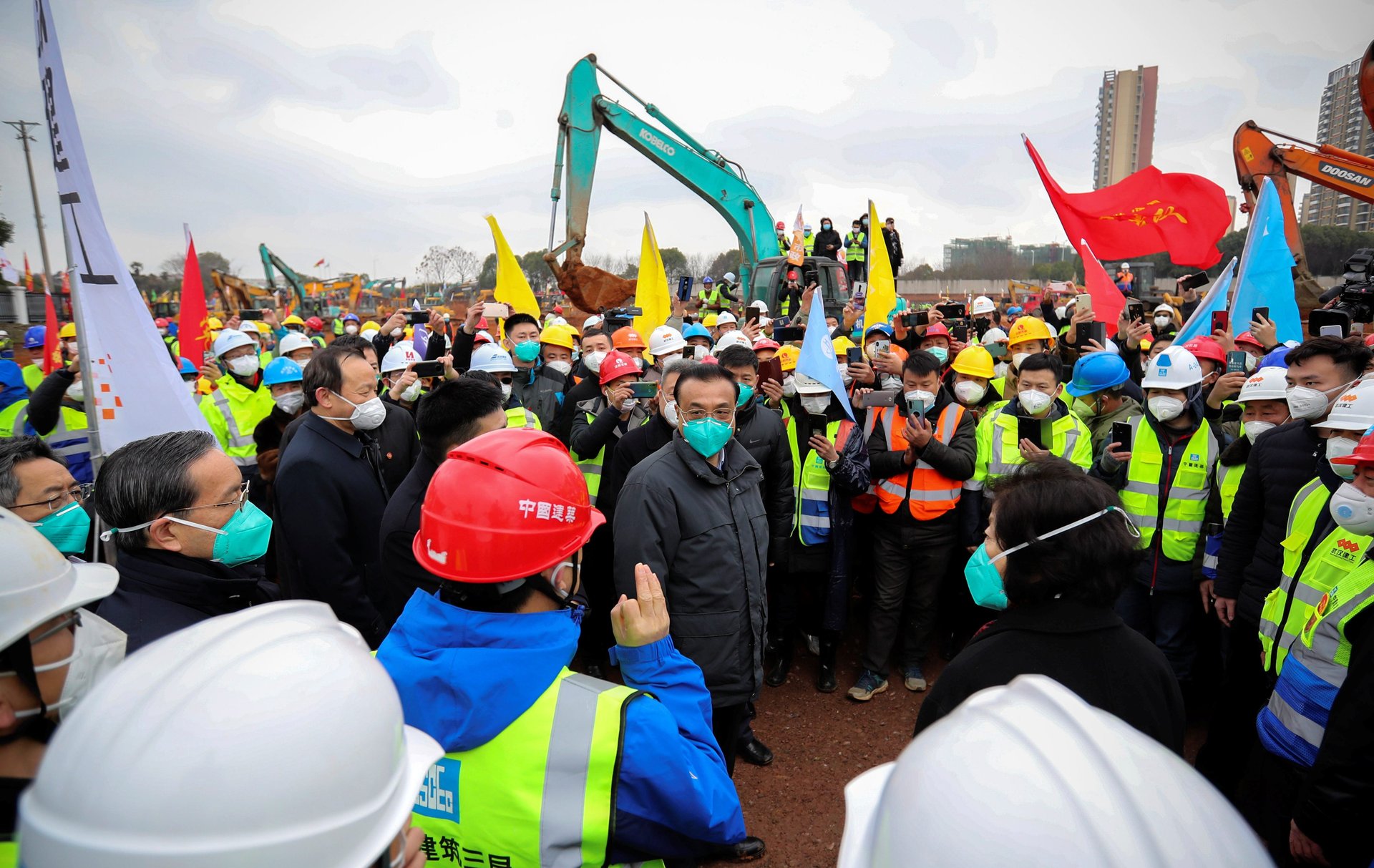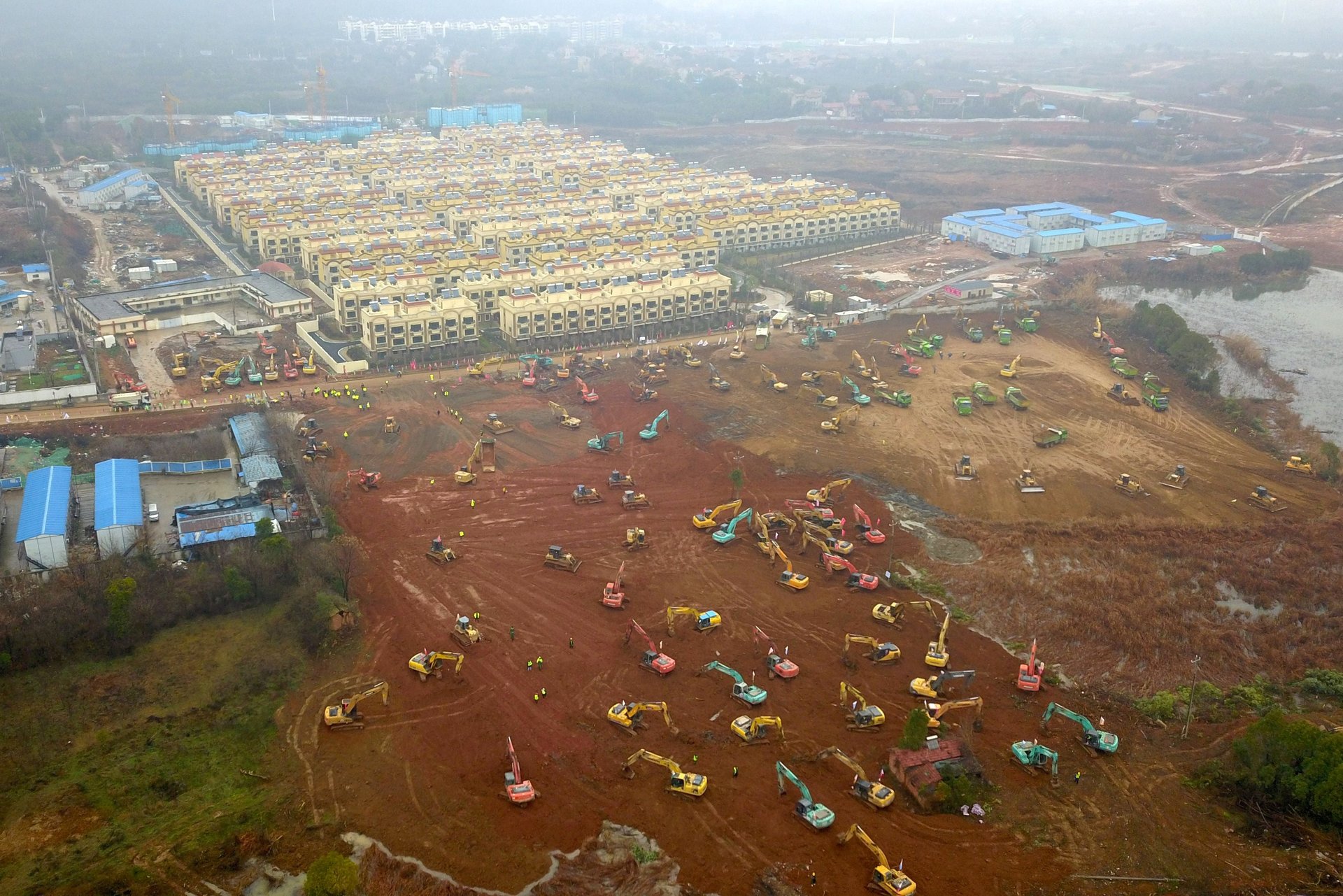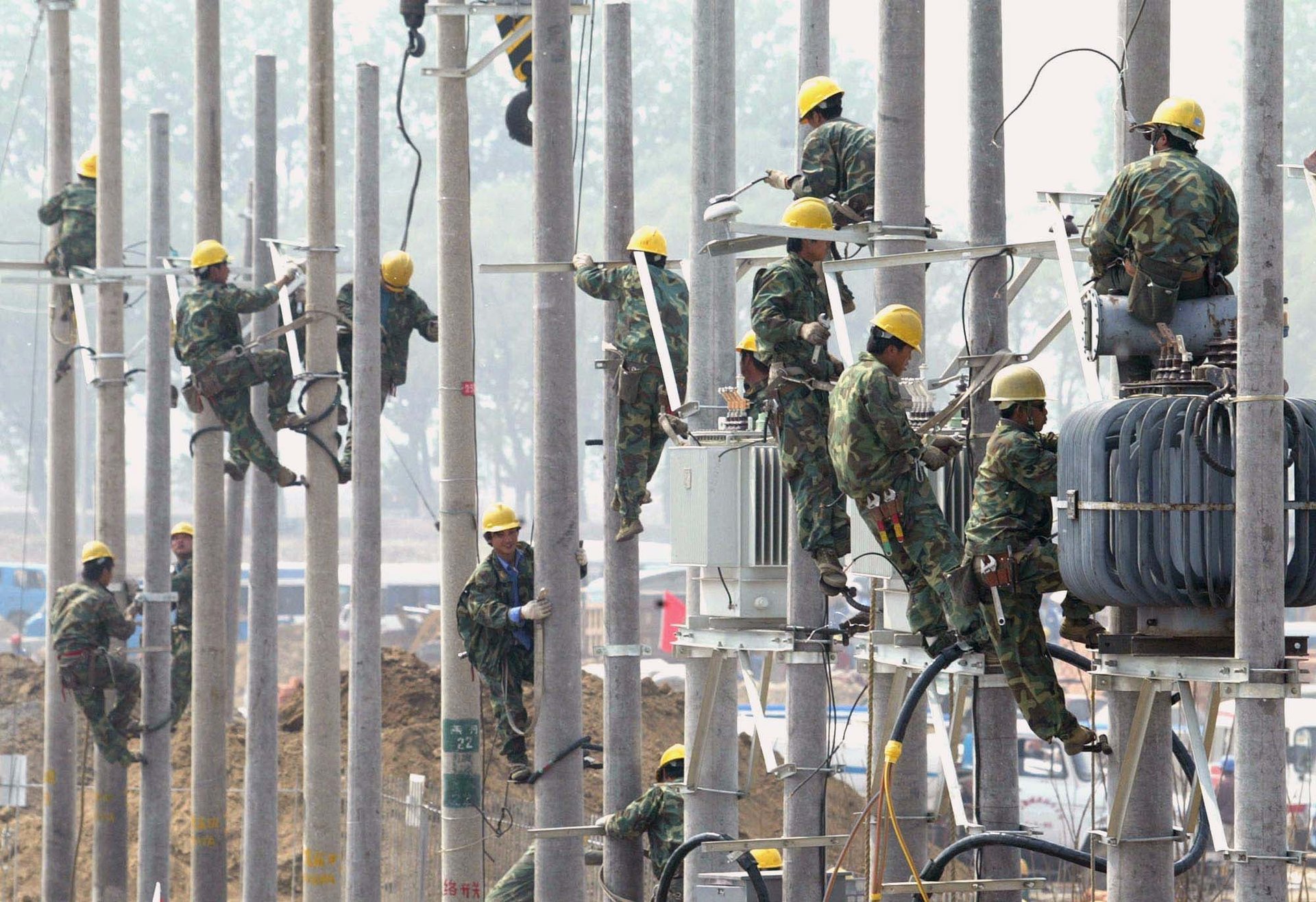How China can build a hospital for coronavirus patients in a week
In Wuhan, China, there’s a riveting sideshow in the unfolding drama to contain the fast-spreading coronavirus strain that has already claimed 132 lives and infected over 6,000, as of the latest confirmed count. The majority of those infected are in Wuhan, and the Chinese government is putting its resources into building new medical facilities, fast. Millions are watching daily videos of an architectural feat: two fully functioning hospitals rising from the ground in mere days.


In Wuhan, China, there’s a riveting sideshow in the unfolding drama to contain the fast-spreading coronavirus strain that has already claimed 132 lives and infected over 6,000, as of the latest confirmed count. The majority of those infected are in Wuhan, and the Chinese government is putting its resources into building new medical facilities, fast. Millions are watching daily videos of an architectural feat: two fully functioning hospitals rising from the ground in mere days.
Broadcast by Chinese state media, drone footage of the construction site shows a ballet of bulldozers digging the foundation and a parade of trucks hauling in steel cable, cement, pre-fab parts and power generators. Workers are toiling around the clock to meet the frantic timeline: Huoshenshan Hospital, which broke ground on Jan. 24, is scheduled to be operational on Feb. 3, will have 1,000 beds and occupy a 269,000 sq. ft. lot in the edge of the city. With an equally ambitious timeline is Leishenshan Hospital, a 323,000-sq. ft, 1,300-bed facility slated to open two days later.
Wuhan’s breakneck construction pace brings up several questions: How can the Chinese radically compress construction timelines? A building—more so a full-service hospital with medical technology equipment—usually takes several years to erect. And can a rapidly built structure really be safe?
Scott Rawlings, an architect who leads the global architecture and engineering firm HOK’s healthcare practice, clarifies that what the Chinese are building isn’t a typical medical facility but more of “a triage center for managing mass infection.”
“I would hesitate to refer to the hospital being erected today in Wuhan as a permanent hospital, and it is certainly not a full-service facility,” he tells Quartz. “When we are designing the latter, we consider the building’s use and adaptability for 75 years into the future…China does not have that luxury in designing its new hospital in Wuhan.”
Rawlings, who is currently working on a new, 500-bed hospital in Chengdu and two hospitals in Hong Kong, explains that for a typical hospital project, considerable time is spent in consulting with patients, medical staff, healthcare administrators, and the surrounding community to make sure a design works for all constituents.
With no time for consultations for a custom design, Wuhan officials are using blueprints from the Xiaotangshan Hospital, a 1,000-bed facility in the outskirts of Beijing assembled in a week during the SARS epidemic in 2003.
Pre-fab hospitals: Safe but not always sustainable
Using prefabricated units is the key to expediting Wuhan’s hospitals. Fully-assembled, factory-made rooms are trucked on site and dropped into place.
This building technique is completely safe, assures Thorsten Helbig, a structural engineer and co-founder of the German engineering firm Knippers Helbig who currently teaches at the Cooper Union in New York City. “You can definitely make pre-fab buildings structurally sound,” he says.
He explains that because units are assembled under the controlled environment of a factory, designers and builders can troubleshoot any problems and make sure all the modular blocks work together before they’re even brought in. Traditional building, on the other hand, is reliant on weather conditions and the choreography of various contractors who work on different aspects of a project. Today, hotel chains from Citizen M and Marriott to KPMG’s newly opened corporate retreat in Florida incorporate pre-fab parts in their build-out plan.

Pre-fab or “modular construction” has also been used in emergency scenarios in other parts of the world, adds Rawlings. The US Department of Defense, for example, can quickly erect field hospitals for emergency diagnosis and treatment, almost anywhere. Students at Clemson University’s Architecture + Health Program are testing the viability of using shipping containers, chained together, to assemble a rapid-response medical facility, he explains. “The technology exists and is being used,” Rawlings says. “Its advancement is probably the future of rapidly deployable healthcare.”
Rawlings says that China’s history with mass epidemics has prepared them for the ongoing crisis in Wuhan. “In many ways China is ahead of the US and other nations when it comes to responding to mass infections, as they’ve been through this before with SARS in the early 2000s,” he says. “China can also have fewer bureaucratic restrictions when it comes to designing and constructing massive projects like this one, particularly when so much is on the line.”
There are noteworthy factors that accelerate building projects in China: the lack of labor unions, the steady influx of cheap labor from provincial towns, and the availability of building materials. But this doesn’t necessarily mean that China’s building standards are more lax compared to Western counterparts.
Helbig, who has worked on several major infrastructure projects in China including Shenzhen Bao’an airport and a Disney resort in Shanghai, says that he found that safety is a priority in China. “They don’t do the crazy things anymore. They evaluate more thoroughly. I feel like that there’s been a shift in attitude over the last 10 to 15 years,” says Helbig. Their long-standing obsession with engineering and architecture has made the Chinese superior builders, he suggests. In 2016, they completed 84 skyscrapers (towers 650 ft and higher) compared to only seven in the US, for instance. Hunan’s Mini Sky City, a 57-story skyscraper, was built in 19 days.
The appetite for innovation also helps, adds Helbig. Compared to the US and European countries, Chinese are more comfortable with embracing new building methods, Helbig observes. “They are very open to new technologies and technological changes, and this is really different from the Western world in some ways,” he says. “As an engineer, I appreciate this attitude. The Chinese will rarely cling to how they’ve done things in the past.”

But as fast and safe buildings rise in China, they’re not necessarily always sustainable. “They [the hospitals] meet the standards when it comes to structural integrity, but perhaps not in energy consumption,” Helbig explains. “I can’t imagine that these are the most optimized buildings.” Beijing’s Xiaotangshan Hospital was “quietly abandoned” after the SARS epidemic was contained, as BBC reports. Because it’s hard to adapt such a specialized facility for any other use, it makes the sprawling hospitals largely useless post-emergency.
Helbig, who is a proponent of sustainable, timber architecture, says there’s work to be done in designing earth-friendly pre-fab units that could be disassembled and repurposed for other emergencies or other useful structures.